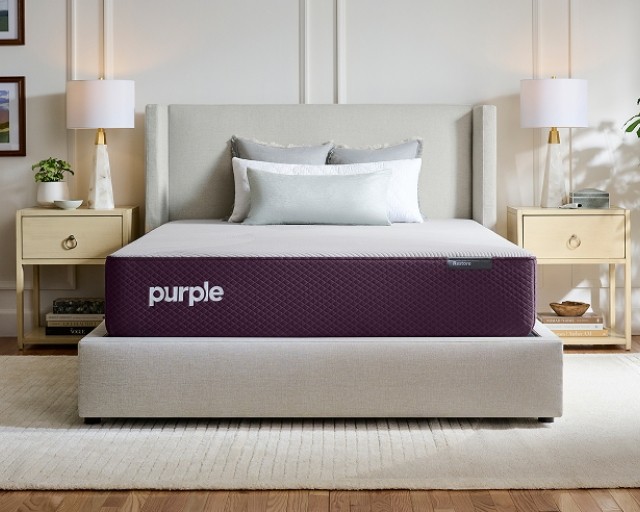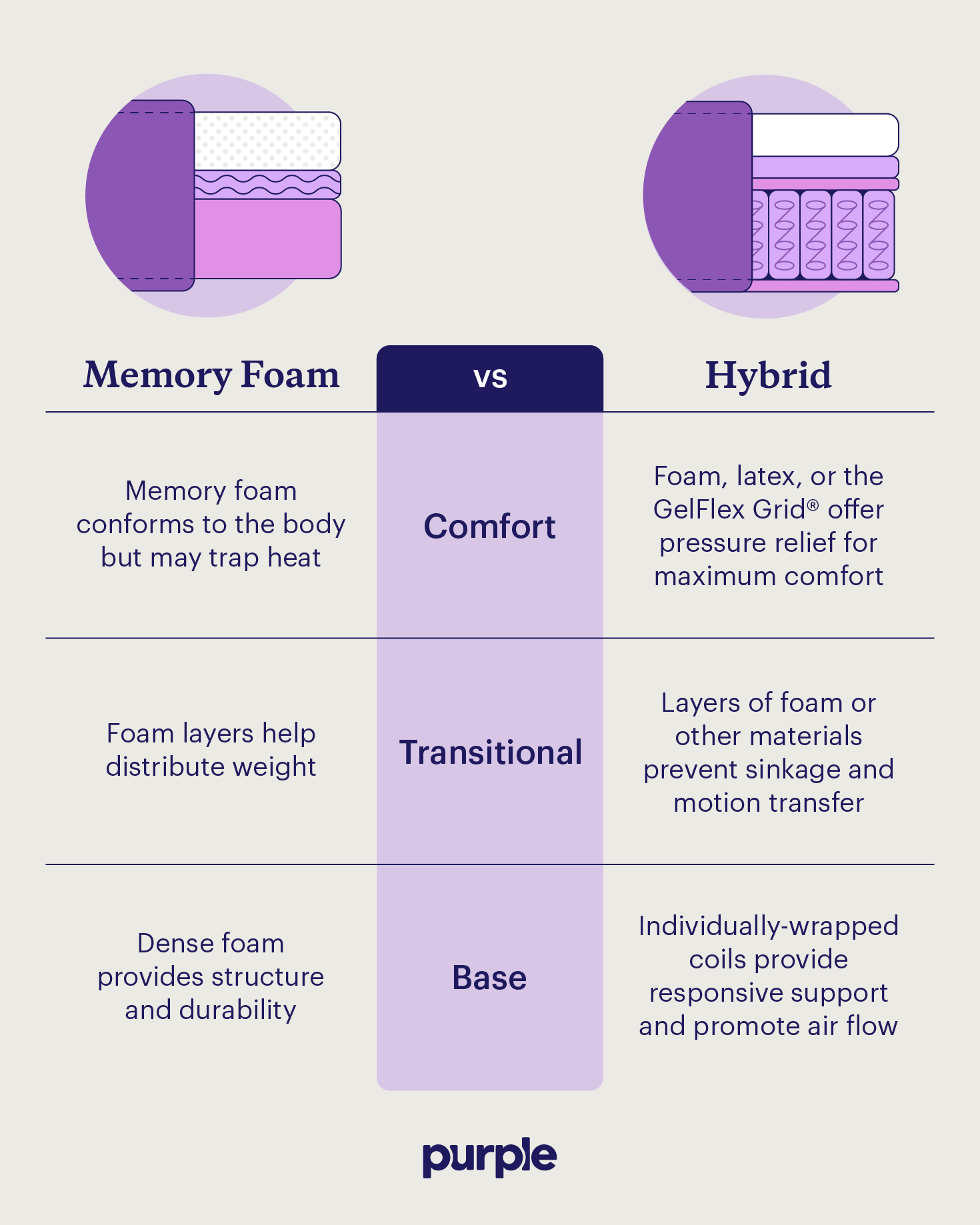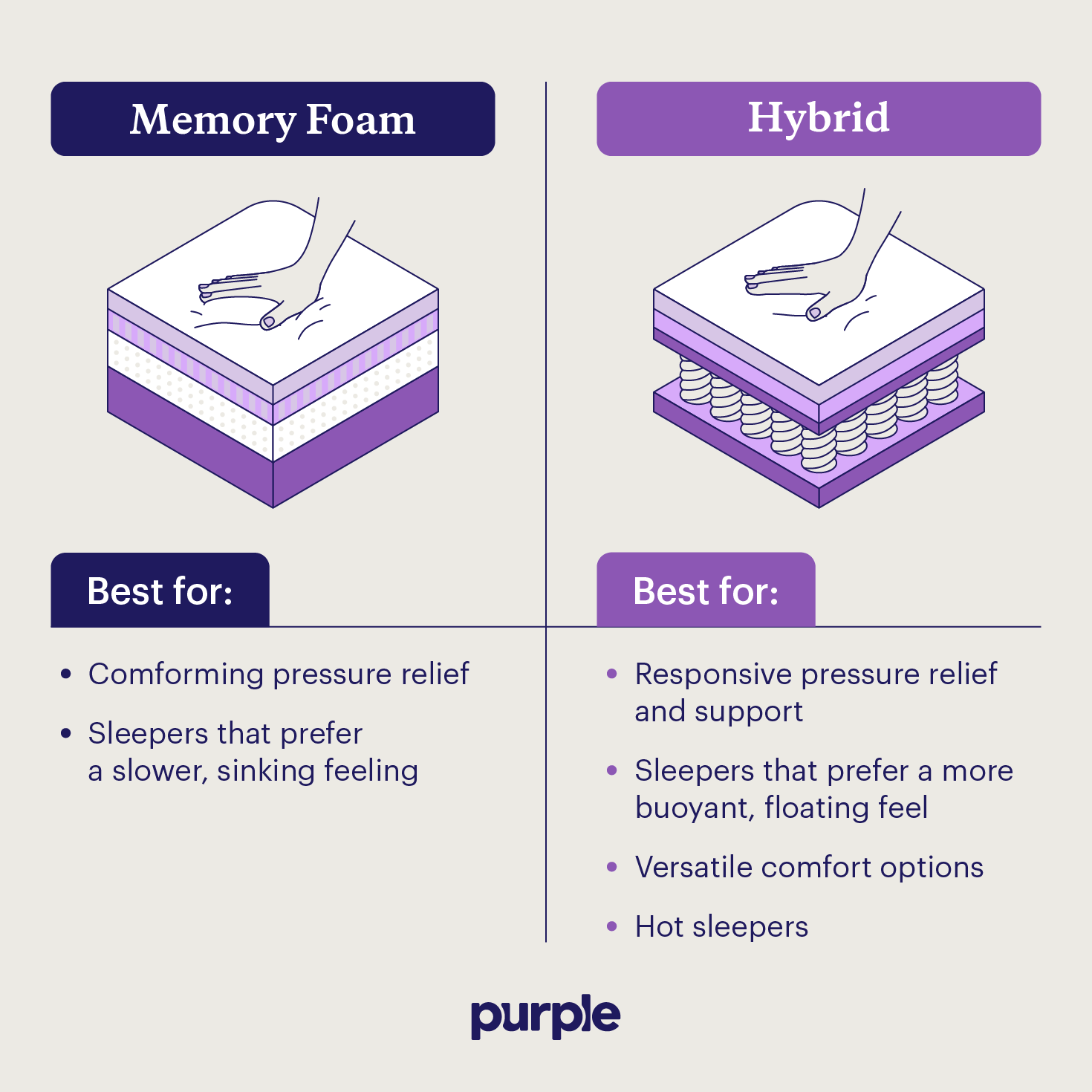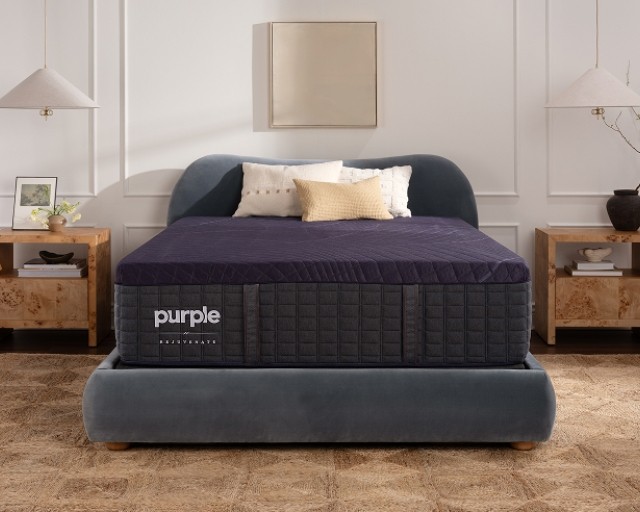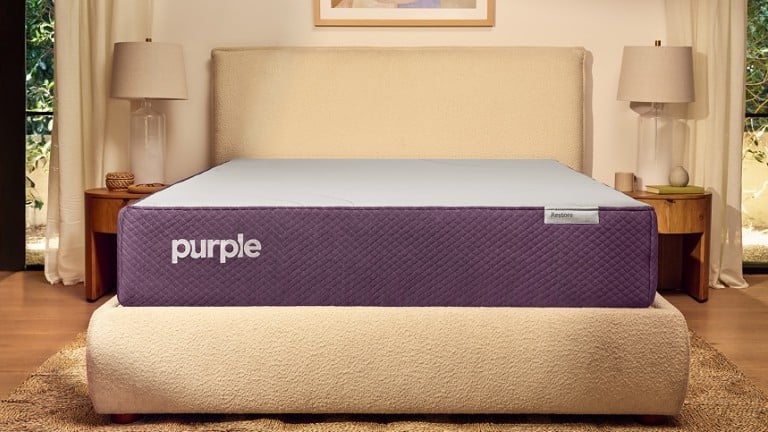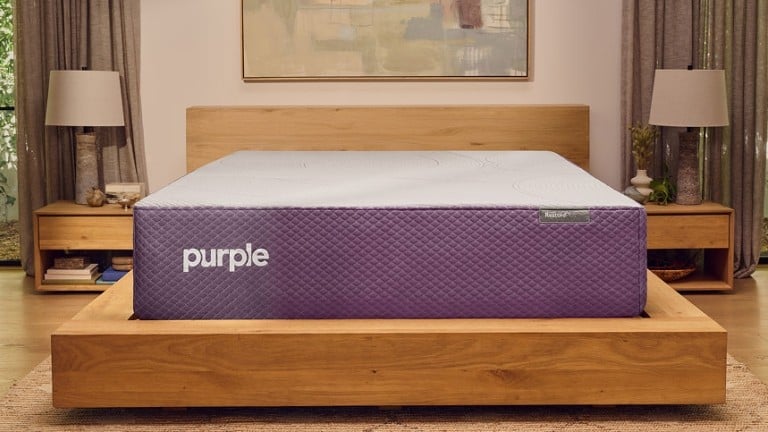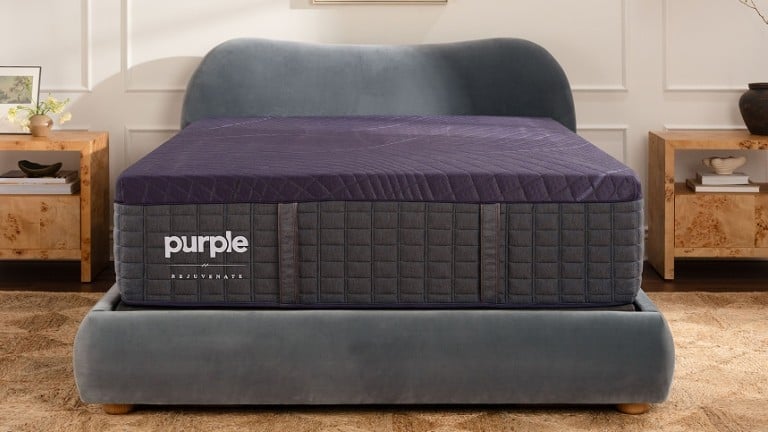
Memory Foam vs. Hybrid: Features and Considerations Guide
Key Takeaways
- Memory foam mattresses contour to your body’s shape, providing a soft, sink-in feel.
- Hybrid mattresses combine two types of mattresses, most often innerspring and foam, for balanced support and comfort.
- While memory foam offers motion isolation and softness, hybrids are pressure-relieving, cooling, and durable.
Memory foam and hybrid mattresses share many benefits—but also are quite different. So which one will best complement your sleep position and preferences?? In order to help you answer that question, we’ve put memory foam and hybrids to the ultimate test.
When it comes time to replace your mattress, you’ll need to decide if you want memory foam’s adaptive cushioning or a hybrid’s more balanced, supportive design. Below, learn the pros and cons of each mattress type, their key differences, and which one will give you the deep, comfortable sleep you need.
What Is a Memory Foam Mattress?
NASA researchers originally invented memory foam to cushion pilots during test flights. Since then, it’s become a popular material for mattresses and other furniture.
Memory foam, or viscoelastic foam, is usually made from a combination of polyurethane foam and other materials that give the mattress its signature density and viscosity. Memory foam thus has the unique ability to cradle the body by molding and shaping in response to pressure and body heat.
Benefits | Considerations |
Pressure relief | May feel too hot for some sleepers |
Motion isolation | Slow, delayed response to movement |
Conforming feel | Potential sagging over time |
Sound absorption | Poor edge support |
Material can be allergen-resistant | |
More budget-friendly |
Pros and Cons of Memory Foam
The benefits of memory foam include pressure relief due to a conforming, cushioning feel. The material’s slow rebound ensures even body weight distribution for balanced support. It also limits motion transfer and absorbs sound, which can help light sleepers avoid disturbing each other at night.
On the other hand, memory foam can make movement difficult for active sleepers since it takes some time for the material to contour to your body. The material also tends to retain heat, a negative for hot sleepers. There’s also potential for the foam to sag over time, and some sleepers find the edge support lacking since sitting on the edge of the bed causes the foam to sink significantly.
Purple mattresses don’t depend on memory foam to provide exceptional pressure relief and support healthy spinal alignment; the GelFlex Grid® instantly adapts to your body as you move for maximum comfort and support no matter how you sleep.
What Is a Hybrid Mattress?
A hybrid mattress combines the support of traditional innerspring coils with the comfort and contouring benefits of memory foam, latex, or Purple's GelFlex Grid®. This combination allows the mattress to cater to a variety of individuals, contributing to its ever-growing popularity.
It’s all about the layers when it comes to hybrid mattresses. The top layer uses materials like polyfoam, memory foam, latex, GelFlex Grid® or a combination to offer customizable softness. Underneath are responsive coils that form the bottom layer — a series of metal springs or pocket coils designed to support the body and respond quickly to movement.
Benefits | Considerations |
Superior breathability | Typically within a higher price range |
Versatile comfort options | Heavier weight |
Responsive pressure relief and support | More motion transfer |
Durability | |
Edge support |
Pros and Cons of Hybrid Mattresses
Due to their coil design, hybrid mattresses offer enhanced airflow. They also have more customizable options regarding softness and firmness preferences. They combine the cloud-like feel of modern memory foam with the bounce and support of old-school innerspring mattresses.
However, hybrids may come with more motion transfer, so couples may feel each other moving around at night. Because of their high-quality designs, hybrids also tend to be heavier to move and sport a slightly higher price tag.
Hybrid Mattress vs. Memory Foam: Key Differences
The differences may seem slight at first glance, but hybrid mattresses and memory foam mattresses are designed to provide different benefits. Here’s an overview of how they differ:
Memory Foam | Hybrid | |
Materials | High-density foam | Comfort layer of foam and/or latex paired with a support layer of pocketed coils or innerspring system |
Feel | Cushiony and sinking | Soft yet supportive and firm |
Durability | Can last 7-10 years | Can last 7-10 years |
Temperature Regulation | May retain heat | Typically more breathable |
Support | Contours to the body for pressure relief but may lack a stable base layer | Pocketed coils or innerspring system provide structure while top layers offer comfort and support |
Motion Transfer | Minimal | Dependant on layers |
Pressure Point Relief | Cradles pressure points | Cradles pressure points while also supporting alignment |
Price | $-$$$ | $$-$$$$ |
Materials
Memory foam and hybrids are two different types of mattresses with unique material constructions.
Memory foam combines polyurethane foam and other chemicals, sometimes including gel for cooling. Hybrid mattresses have a top layer of polyfoam, memory foam, latex, or GelFlex Grid® with responsive metal springs or pocket coils underneath to support the body and respond quickly to movement.
Feel
Memory foam provides a sinking feeling as the mattress adapts to and hugs your body. Hybrids have a comfort layer as well, but their additional bottom layer of coils adds more support and bounce. When it comes to mattress firmness, hybrids usually provide a sturdier feel.
Durability
Both memory foam and hybrid mattresses should last 7 to 10 years, but mattress lifespan depends on material and construction quality and how well you take care of it. Note that a mattress used by two people with more body weight will degrade faster. Higher-quality mattresses will also last longer.
Temperature Regulation
If you’re looking to find the best cooling mattress, opt for a hybrid. The innerspring system allows for more airflow to keep you cooler at night. Purple hybrid mattresses use the GelFlex Grid® for added breathability plus exceptional support. Memory foam tends to absorb and hold onto heat. Gel memory foam can reduce heat retention better than traditional memory foam, but most hybrids are the superior option for temperature regulation.
Support
When it comes to body weight and required support, both memory foam and hybrid mattresses offer options for different sleepers, especially lightweight and average-weight sleepers. Heavyweight sleepers may benefit from extra support in the form of targeted support coils found in high-quality hybrid mattresses, which often have a higher mattress weight limit.
Motion Transfer
Both mattresses limit motion transfer significantly, with memory foam generally more recognized for its slow rebound. However, a well-constructed hybrid mattress has the ability to limit motion as well as memory foam.
Pressure Point Relief
Memory foam mattresses often feel relatively soft, cushioning pressure points like the shoulders and hips. Hybrids also make excellent pressure relief mattresses because they have the added support of springs to promote spinal alignment. Mattresses like the RestorePlus® Hybrid combine Ultra Comfort Foam, GelFlex Grid®, and 3-zone edge-to-edge coil support to keep your spine aligned and cushion your pressure points for maximum comfort.
Ultimately, the best option for your pressure points will come down to personal preference.
Sleep Position
While either mattress type will work for all sleeping positions, some sleepers may prefer one over the other.
If you sleep on your stomach or your back, you may benefit from the extra support provided by the combination of supportive coils and the comfort layers of a hybrid mattress. When weighing hybrid vs. memory foam mattresses for side sleepers, consider that memory foam provides soft cushioning for the hips and shoulders, but hybrids offer superior targeted support.
Price
How much you spend on a mattress will depend on quality and brand. Generally, you can expect to pay $450-$1,300+ for a memory foam mattress. For hybrid mattresses, you may pay $1,200-$3,000+.
Overall, there’s a greater range of price options available for memory foam mattresses, but the higher price of a hybrid mattress tends to be outweighed by the higher quality of materials and construction.
Hybrid Mattress vs. Memory Foam: Key Differences
The differences may seem slight at first glance, but hybrid mattresses and memory foam mattresses are designed to provide different benefits. Here’s an overview of how they differ:
Memory Foam | Hybrid | |
Materials | High-density foam | Comfort layer of foam and/or latex paired with a support layer of pocketed coils or innerspring system |
Feel | Cushiony and sinking | Soft yet supportive and firm |
Durability | Can last 7-10 years | Can last 7-10 years |
Temperature Regulation | May retain heat | Typically more breathable |
Support | Contours to the body for pressure relief but may lack a stable base layer | Pocketed coils or innerspring system provide structure while top layers offer comfort and support |
Motion Transfer | Minimal | Dependant on layers |
Pressure Point Relief | Cradles pressure points | Cradles pressure points while also supporting alignment |
Price | $-$$$ | $$-$$$$ |
Materials
Memory foam and hybrids are two different types of mattresses with unique material constructions.
Memory foam combines polyurethane foam and other chemicals, sometimes including gel for cooling. Hybrid mattresses have a top layer of polyfoam, memory foam, latex, or GelFlex Grid® with responsive metal springs or pocket coils underneath to support the body and respond quickly to movement.
Feel
Memory foam provides a sinking feeling as the mattress adapts to and hugs your body. Hybrids have a comfort layer as well, but their additional bottom layer of coils adds more support and bounce. When it comes to mattress firmness, hybrids usually provide a sturdier feel.
Durability
Both memory foam and hybrid mattresses should last 7 to 10 years, but mattress lifespan depends on material and construction quality and how well you take care of it. Note that a mattress used by two people with more body weight will degrade faster. Higher-quality mattresses will also last longer.
Temperature Regulation
If you’re looking to find the best cooling mattress, opt for a hybrid. The innerspring system allows for more airflow to keep you cooler at night. Purple hybrid mattresses use the GelFlex Grid® for added breathability plus exceptional support. Memory foam tends to absorb and hold onto heat. Gel memory foam can reduce heat retention better than traditional memory foam, but most hybrids are the superior option for temperature regulation.
Support
When it comes to body weight and required support, both memory foam and hybrid mattresses offer options for different sleepers, especially lightweight and average-weight sleepers. Heavyweight sleepers may benefit from extra support in the form of targeted support coils found in high-quality hybrid mattresses, which often have a higher mattress weight limit.
Motion Transfer
Both mattresses limit motion transfer significantly, with memory foam generally more recognized for its slow rebound. However, a well-constructed hybrid mattress has the ability to limit motion as well as memory foam.
Pressure Point Relief
Memory foam mattresses often feel relatively soft, cushioning pressure points like the shoulders and hips. Hybrids also make excellent pressure relief mattresses because they have the added support of springs to promote spinal alignment. Mattresses like the RestorePlus® Hybrid combine Ultra Comfort Foam, GelFlex Grid®, and 3-zone edge-to-edge coil support to keep your spine aligned and cushion your pressure points for maximum comfort.
Ultimately, the best option for your pressure points will come down to personal preference.
Sleep Position
While either mattress type will work for all sleeping positions, some sleepers may prefer one over the other.
If you sleep on your stomach or your back, you may benefit from the extra support provided by the combination of supportive coils and the comfort layers of a hybrid mattress. When weighing hybrid vs. memory foam mattresses for side sleepers, consider that memory foam provides soft cushioning for the hips and shoulders, but hybrids offer superior targeted support.
Price
How much you spend on a mattress will depend on quality and brand. Generally, you can expect to pay $450-$1,300+ for a memory foam mattress. For hybrid mattresses, you may pay $1,200-$3,000+.
Overall, there’s a greater range of price options available for memory foam mattresses, but the higher price of a hybrid mattress tends to be outweighed by the higher quality of materials and construction.
Choose the Best Mattress From Purple
Now that we’ve settled the memory foam vs. hybrid debate, it’s time to choose your perfect mattress. Ultimately, we know the choice comes down to personal preference, which is why Purple offers foam and hybrid options.
For those who prefer the feel of foam, the Purple Essential collection offers instantly adaptive support and pressure relief, pairing comfort foam layers with the GelFlex Grid®.
If you want a hybrid, the Restore® Hybrid collection combines the cutting-edge GelFlex Grid® with responsive coils to provide superior pressure relief and sleep. In fact, in a recent sleep study, participants saw over 2.5x improvement in reported sleep quality2 when sleeping on a Purple Restore collection mattress, a testament to the difference Purple can make.
You can also indulge in luxurious comfort with a Quilted Euro Top. Our Rejuvenate® collection melds the benefits of a zoned coil system with multiple layers of the GelFlex Grid® for optimal body support and pressure relief.
FAQ
Neither mattress is necessarily better than the other. Whether you prefer a hybrid or memory foam mattress will ultimately come down to your preference and sleeping needs. Memory foam is typically better for motion isolation and hugging your body, while hybrids offer a better balance of cushioning and support.
If you’re considering a memory foam or a hybrid for side sleepers, for example, you may find that memory foam is softer on the hip and shoulder pressure points, but hybrids will also promote healthy spinal alignment.
A hybrid mattress offers more support for your back, so those with lower back pain may find hybrids to be the better choice to prevent them from sinking in too much. A memory foam mattress can still offer relief for back pain, but it’s important to find the right firmness level. If you suffer from back pain, speak to a medical professional to determine which option may be best for your situation.
Both memory foam and hybrid mattresses tend to last between 7 and 10 years, depending on the material quality, construction, and how well you take care of it.
Gel memory foam mattresses are infused with cooling gel, which helps regulate heat. However, when weighing gel memory foam vs. hybrid beds, note that gel foam lacks the support of coils that give hybrid mattresses a firmer feel and superior cooling.
More To Explore
Level up your sleep routine with our most-loved products.



